Washing Machine Load Sizes
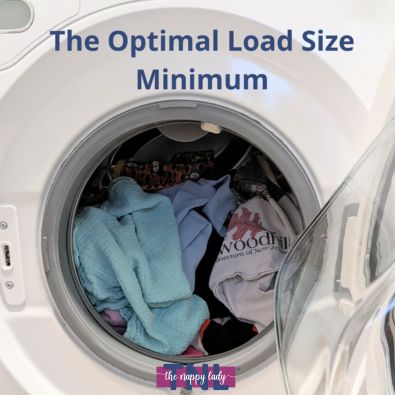
Are you wondering how full is “just right” for a nappy wash?
When it comes to washing nappies, washing machine load size is an issue that many people worry about. While I would love to give a onesize fits all answer, the truth is that every machine is different and what works for one household won’t necessarily work for someone else. Some machine work better fuller, some with less in, some weigh the load and adjust the water used, some only use a set amount. So, with all these variables how do you know what’s right? If your nappies are coming out clean and with no smells then I wouldn’t worry and would continue as you are. If you are struggling with smells, rashes or leaks then I would check the washing routine including the load size.
What is an ideal load size?
Ideally you are looking for your machine to be around 2/3 – ¾ full when dry, at the start of the cycle when you put your nappies in. This will then mean that the machine looks around half full when the nappies are full of water.
Some examples of an ideal load size are:
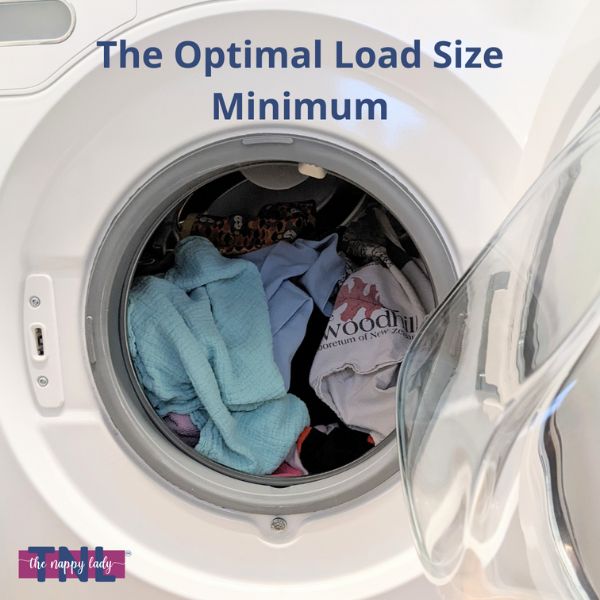
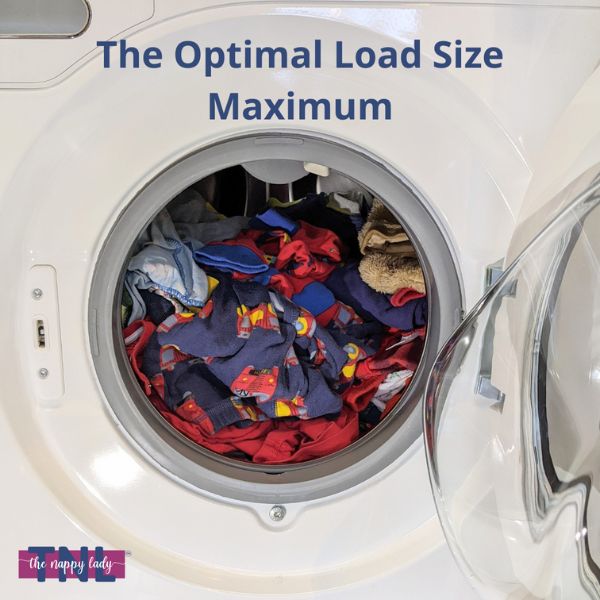
What if the machine is overloaded?
If the machine is fuller than recommended then the items inside tend to be so tightly packed in that there is no room for them to move around and agitate against each other (which is an important part of the washing process). Items often move around in one large mass, preventing detergent being able to circulate or dissolve properly. You also need enough water in the machine for the detergent to dissolve. If the items in the wash have absorbed all the water and there is no extra water in the drum, the detergent won’t be able to dissolve correctly. This means some stains will be targeted while others remain untouched and can cause marks on washing as well as items not being thoroughly washed. In all, this can mean you need a second wash, which leads to increased electricity consumption and higher bills.
It's really important not to overload the machine. Overloading a machine puts extra stress on the appliance and cause damage to the motor and/or the bearings, and can cause premature appliance failure.
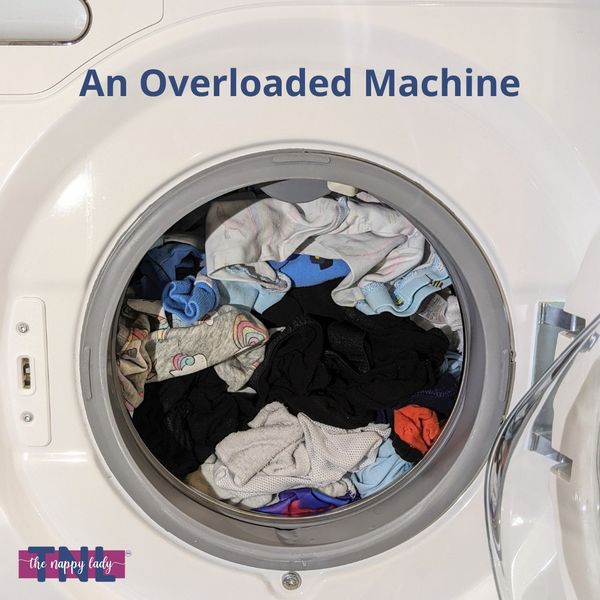
What if the machine is underloaded?
If the machine is emptier than recommended then items within the wash tend to accumulate on one side of the drum and bang against the frame during the spin cycle. This also throws the machine out of balance and results in excessive vibrations and loud banging noises. Nappies stuck against the side of the drum are less able to be washed through thoroughly as they aren’t agitating around in the water.
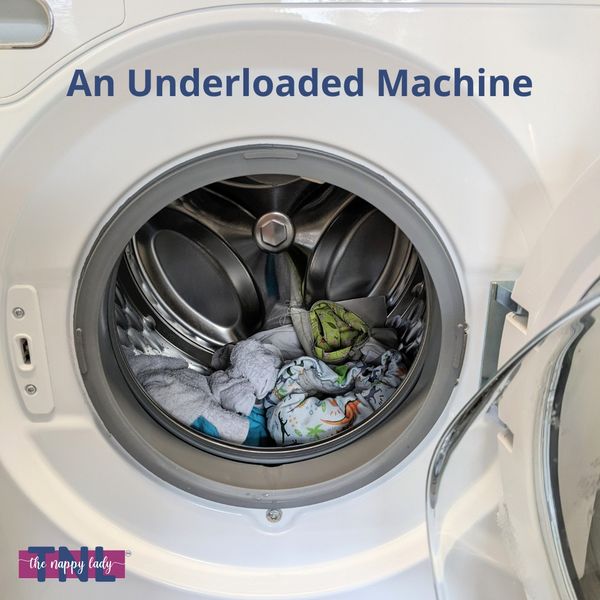
I don’t have enough nappies for the correct load size.
If your nappy wash isn’t enough for the correct load size, then you might be tempted to leave the wash for an extra day or two. We strongly recommend against this, as leaving nappies longer than 2 days often leads the materials degrading faster (especially natural materials like organic cotton). In addition, we find that nappies need an even more thorough wash if left longer than 2 days, as the urine and poo has settled more deeply into the fabric.
The most common – and economical - solution to not having a big enough load is to add extra items to the wash. You can add any items smaller than a tea towel - we’ve all found a pillowcase tucked in the corner of a duvet cover before and this is exactly what we don’t want when washing nappies. Some examples of items people add to their nappy wash include:
• Baby clothes
• Toddler clothes
• Bibs
• Socks
• Underwear
• Cleaning cloths
• Face wipes
• Flannels
• Tea Towels
If you’re concerned about mixing the rest of your household laundry with your nappies, you may choose to run the initial rinse cycle with just nappies, then add the rest of your items before the main wash. Don’t forget that with a good washing routine, everything will be thoroughly washed by the end of the cycle.
TNL Ambassador Ruth shares her experience
"I have a 9kg machine and my toddler is mostly potty trained, so washing every two days I only have a couple of night nappies, cloth wipes, and sometimes a couple of pairs of training pants, to wash.
After I have run the initial rinse cycle to flush out the urine, I add other items to bulk the load up to 2/3 to 3/4 full for the main wash.
With a 9kg machine, I've always had to add items (such as tea towels and muslins) however now he's wearing so few nappies I'm needing to add a lot more.
Anything hand towel sized or smaller is fine to add, if it's any larger it can affect the agitation during the wash. I add tea towels, kitchen cloths, flannels, bibs, wet bags, children's clothes, underwear - anything small that will benefit from a good long wash. In fact, a long nappy wash is particularly great for getting his nursery clothes properly clean!"
Getting the load size correct is very important as neither underloading or overloading the machine is good for your machine, your washing or the environment.
If you would like any help with your washing load size or washing in general then our advice team is always on hand, either via email at advice@thenappylady.co.uk or you can complete our troubleshooting questionnaire and we will get back to you.
Click Here to Start the Troubleshooting Questionnaire
References
